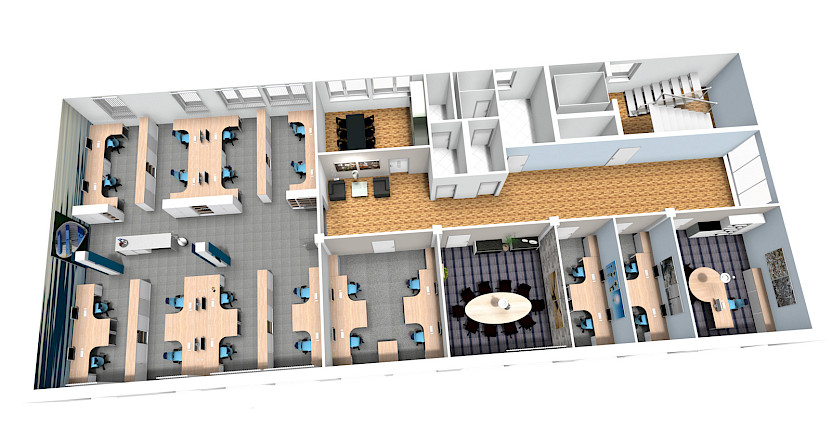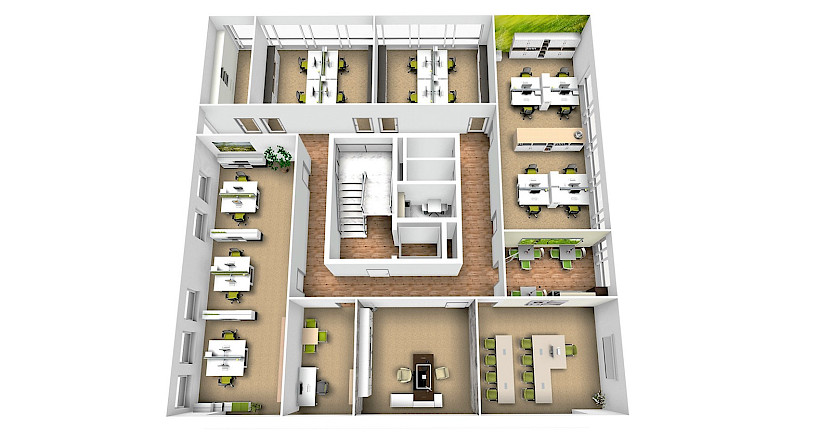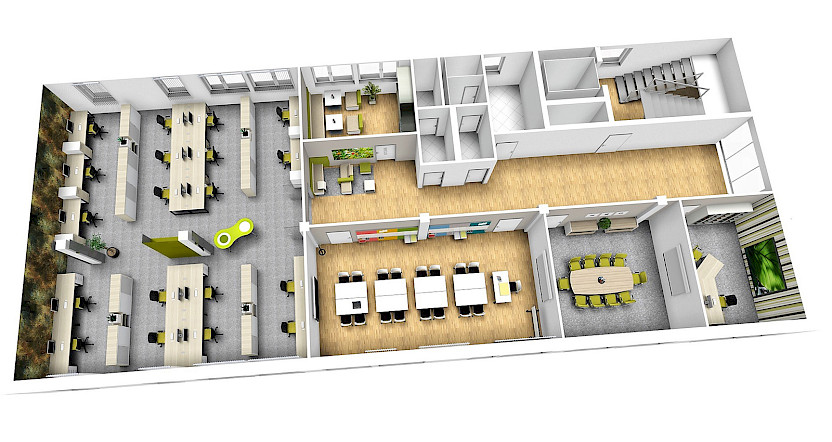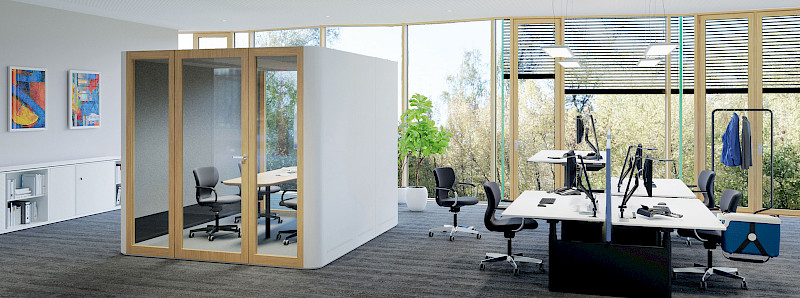Much like open-space offices, multispace offices are not a distinct office type, but rather a combination of different office areas. The key difference is that multispace offices also include a variety of workplace types specifically designed for focused work. Typically, larger group offices are combined with smaller office units and other functional zones. When planning such spaces, it’s important to ensure that rooms can be used flexibly and adapted to changing needs.



Advantages of the multispace office
- High flexibility in organising work
- Accommodates a wide range of work requirements
- Allows for individual preferences to be considered
- Avoids monotony
Disadvantages of the multispace office
- When desks are permanently assigned:
Unequal treatment of staff - When desks are flexibly allocated:
Booking systems and/or usage guidelines are necessary - Subdividing large spaces into smaller units can limit design options
In addition, the specific advantages and disadvantages of each individual office type also apply.
According to ASR A1.2, the following minimum floor areas should be used when designing office landscapes:
- In open-plan areas: 12 to 15 m² per workstation
- In cellular offices: 8 to 10 m² per workstation
Regardless of the room type, only those spaces may be used “whose floor areas comprise at least 8 m² for one workstation plus at least 6 m² for each additional workstation.” Additionally, a minimum of 12 m³ of air volume must be available per employee. (Note: These requirements do not apply to meeting and training rooms.)
Our Tip: You’ll find furnishing ideas for all areas of the multispace office in the IBA Forum showrooms.
The header image of this article is taken from the showroom of the brand VS.





